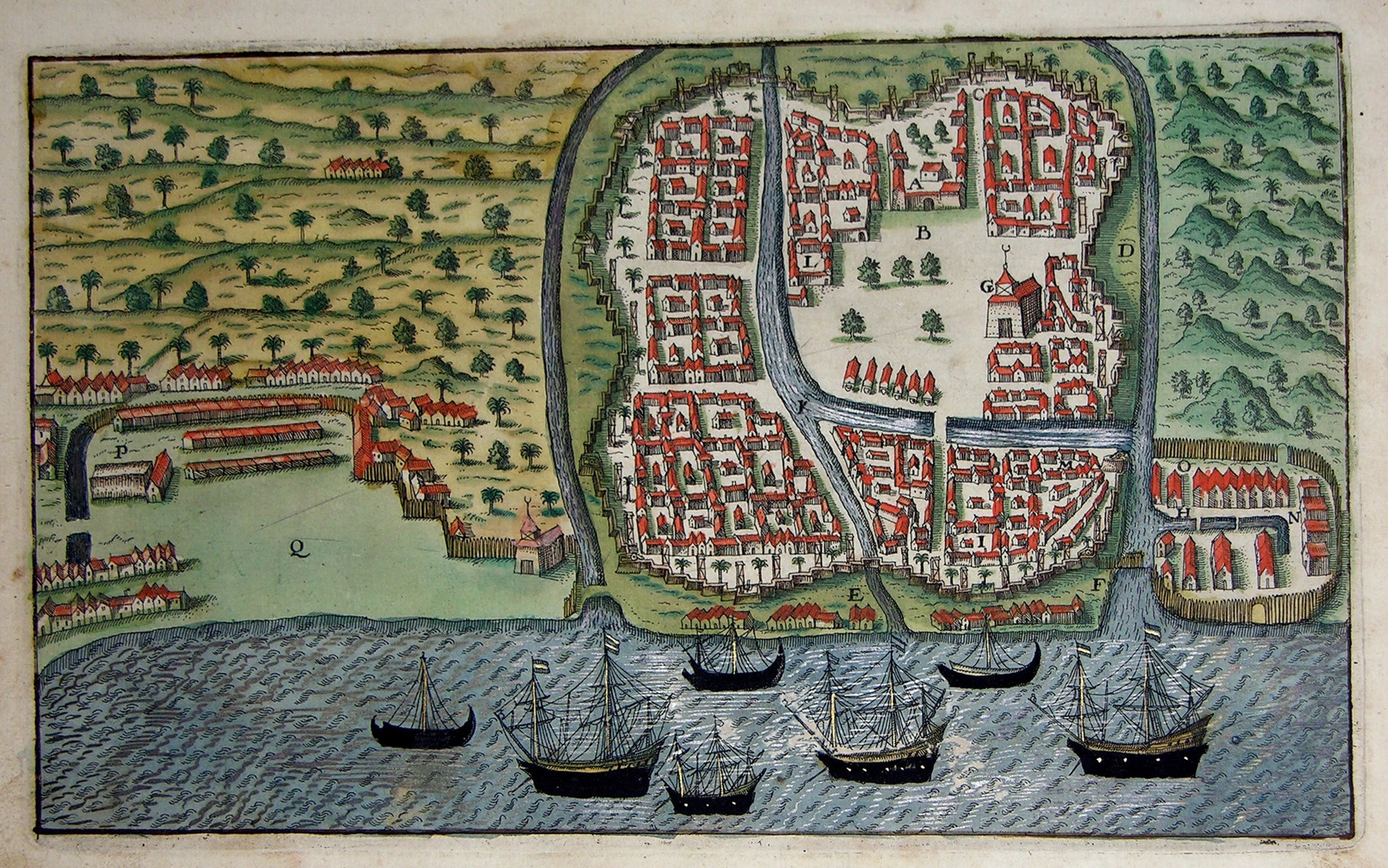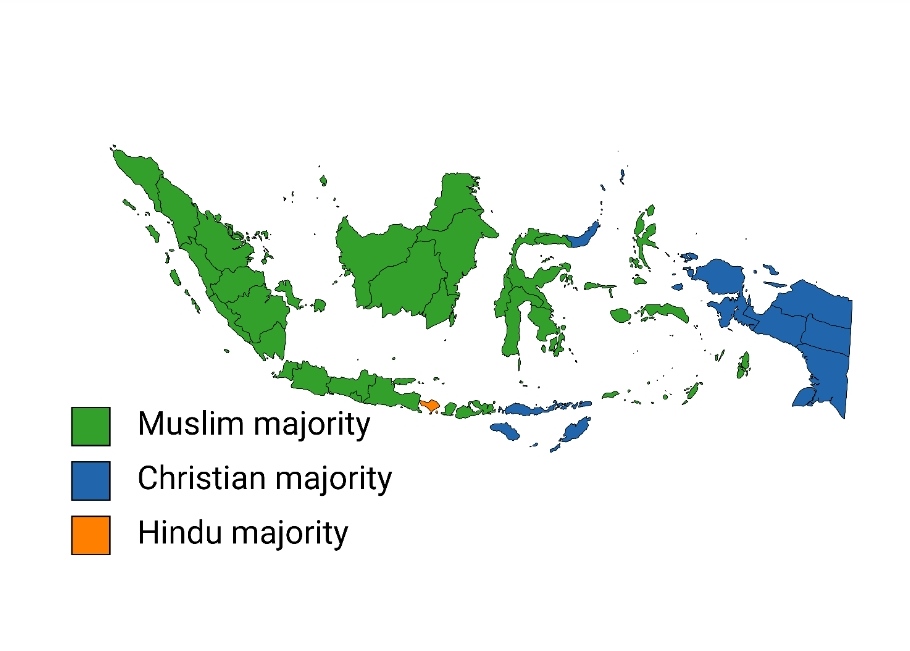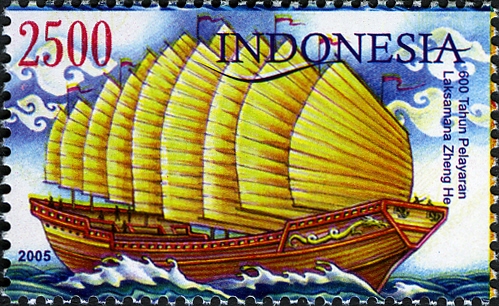|
Sunan Muria
Sunan Muria (or Muria) is, according to the '' Babad Tanah Jawi'' ("History of the land of Java") manuscripts, one of the ''Wali Sanga'' ("Nine Saints") involved in propagating Islam in Indonesia. He was born as Raden Umar Said, as the son of Raden Said (Sunan Kalijaga). :id:Sunan Muria A big distinction of Sunan Muria - apart from the other Sunans - is his very-close-relationship to common people. He tend to spread his teaching in rural and remote areas, including teaching local people in agriculture, fishery, and other things. His name is used as the name of the nearby mountain, Mount Muria. See also *Islam in Indonesia *The spread of Islam in Indonesia The history of the arrival of Islam in Indonesia is somewhat unclear. One theory states that Islam arrived directly from Arabia as early as the 9th century, during the time of the Umayyad and Abbasid caliphates. Another theory credits Sufi trav ... References *Sunyoto, Agus (2014). ''Atlas Wali Songo: Buku Pertama y ... [...More Info...] [...Related Items...] OR: [Wikipedia] [Google] [Baidu] |
Kudus Regency
:''This article refers to the regency in Indonesia; see also Al-Quds (Jerusalem)'' Kudus ( jv, ꦏꦸꦢꦸꦱ꧀) is a regency ( id, kabupaten) in Central Java province in Indonesia. Its capital is Kudus. It covers 425.16 km2 and is thus the smallest regency on Java Island in area, and it had a population of 777,437 at the 2010 Census and 849,184 at the 2020 Census, comprising 423,777 males and 425,407 females. It is located east of Semarang, the capital of Central Java. History The city of Kudus was something of an important Islamic holy city in the sixteenth century. It is the only place in Java that has permanently acquired an Arabic name ('al-Quds', Jerusalem). Sunan Kudus, one of the nine ''Wali Sanga'', was said to have been the fifth ''imam'' (head) of the mosque of Demak and a major leader of the 1527 campaign against 'Majapahit', before moving to Kudus. The Mosque of Kudus (''Masjid Menara'') which dates from this period, remains a local landmark to this day. ... [...More Info...] [...Related Items...] OR: [Wikipedia] [Google] [Baidu] |
Demak Sultanate
The Demak Sultanate (کسلطانن دمق) was a Javanese Muslim state located on Java's north coast in Indonesia, at the site of the present-day city of Demak. A port fief to the Hindu-Buddhist Majapahit kingdom thought to have been founded in the last quarter of the 15th century, it was influenced by Islam brought by Muslim traders from China, Gujarat, Arabia and also Islamic kingdoms in the region, such as Samudra Pasai, Malacca and Bani (Muslim) Champa. The sultanate was the first Muslim state in Java, and once dominated most of the northern coast of Java and southern Sumatra. Although it lasted only a little more than a century, the sultanate played an important role in the establishment of Islam in Indonesia, especially on Java and neighboring areas. Etymology The origin of Demak was the settlement named Glagah Wangi. According to tradition, the first person that Raden Patah encountered in Glagah Wangi was a woman named Nyai Lembah, from Rawa Pening. Nyai Lembah invited ... [...More Info...] [...Related Items...] OR: [Wikipedia] [Google] [Baidu] |
Cirebon Sultanate
The Sultanate of Cirebon ( id, Kesultanan Cirebon, Pegon: كسلطانن چيربون, su, Kasultanan Cirebon) was an Islamic sultanate in West Java founded in the 15th century. It is said to have been founded by Sunan Gunungjati, as marked by his letter proclaiming Cirebon's independence from Pajajaran in 1482, although the settlement and the polity had been established earlier, in 1445. Sunan Gunungjati also established the Sultanate of Banten. It was one of the earliest Islamic states established in Java, along with the Sultanate of Demak. The sultanate's capital lay around the modern-day city of Cirebon on Java's northern coast. Throughout the 16th and 17th centuries, the sultanate thrived and became a major regional centre of trade and commerce, as well as a prominent centre of Islamic learning. The sultanate split into three royal houses in 1677, and a fourth split off in 1807, each with their own separate lines of descent and kratons; Kraton Kasepuhan, Kraton Ka ... [...More Info...] [...Related Items...] OR: [Wikipedia] [Google] [Baidu] |
Banten Sultanate
The Banten Sultanate (كسلطانن بنتن) was a Bantenese Islamic trading kingdom founded in the 16th century and centred in Banten, a port city on the northwest coast of Java; the contemporary English name of both was Bantam. It is said to have been founded by Sunan Gunungjati, who had previously founded Cirebon. Once a great trading centre in Southeast Asia, especially of pepper, the kingdom reached its apogee in the late 16th and mid-17th centuries. By the late 17th century its importance was overshadowed by Batavia, and finally annexed to Dutch East Indies in 1813. Its core territory now forms the Indonesian province of Banten. Today, in Old Banten, the Great Mosque of Banten is an important destination for tourists and for pilgrims from across Indonesia and from overseas. Formation Before 1526 CE, a settlement called Banten was situated about ten kilometres inland from the coast on the Cibanten River, in the area which is today occupied by the southern suburbs of ... [...More Info...] [...Related Items...] OR: [Wikipedia] [Google] [Baidu] |
Walisongo
The Wali Songo (also transcribed as Wali Sanga) are revered saints of Islam in Indonesia, especially on the island of Java, because of their historic role in the spread of Islam in Indonesia. The word ''wali'' is Arabic for "trusted one" ("guardian" in other contexts in Indonesia) or "friend of God" ("saint" in this context), while the word ''sanga'' is Javanese for the number nine. Although referred to as a group, there is good evidence that fewer than nine were alive at any given time. Also, there are sources that use the term "Wali Sanga" to refer to saintly mystic(s) other than the most well-known nine individuals. Each man is often attributed the title '' sunan'' in Javanese, which may derive from ''suhun'', in this context meaning "honoured". Most of the wali were also called ''raden'' during their lifetimes, because they were members of royal houses. (See "Style and Title" section of Yogyakarta Sultanate for an explanation of Javanese nobility terms.) The graves of W ... [...More Info...] [...Related Items...] OR: [Wikipedia] [Google] [Baidu] |
Babad Tanah Jawi
''Babad Tanah Jawi'' ( jv, ꦧꦧꦢ꧀ꦠꦤꦃꦗꦮꦶ, "History of the land of Java"), is a generic title for many manuscripts written in the Javanese language. Their arrangements and details vary, and no copies of any of the manuscripts are older than the 18th century. Due to the scarcity and limitations of primary historical records, ''Babad Tanah Jawi'', is one of a number of accounts of Indonesian legends that scholars use to help illuminate aspects of the spread of Islam in Indonesia, the dominant religion in the Indonesian archipelago since the 16th century. The texts attribute the first Javanese conversions to Islam to the ''Wali Sanga'' ("nine saints"), although their names and relationships vary across the texts to the extent that perfect reduction and agreement between them is not possible. Although most of the manuscripts accept the convention of nine saints, a number list ten. These names commonly appear throughout the ''Babad Tanah Jawi'' texts: * Sunan Ngampel-D ... [...More Info...] [...Related Items...] OR: [Wikipedia] [Google] [Baidu] |
Wali Sanga
The Wali Songo (also transcribed as Wali Sanga) are revered saints of Islam in Indonesia, especially on the island of Java, because of their historic role in the spread of Islam in Indonesia. The word ''wali'' is Arabic for "trusted one" ("guardian" in other contexts in Indonesia) or "friend of God" ("saint" in this context), while the word ''sanga'' is Javanese for the number nine. Although referred to as a group, there is good evidence that fewer than nine were alive at any given time. Also, there are sources that use the term "Wali Sanga" to refer to saintly mystic(s) other than the most well-known nine individuals. Each man is often attributed the title '' sunan'' in Javanese, which may derive from ''suhun'', in this context meaning "honoured". Most of the wali were also called ''raden'' during their lifetimes, because they were members of royal houses. (See "Style and Title" section of Yogyakarta Sultanate for an explanation of Javanese nobility terms.) The graves of W ... [...More Info...] [...Related Items...] OR: [Wikipedia] [Google] [Baidu] |
Indonesia
Indonesia, officially the Republic of Indonesia, is a country in Southeast Asia and Oceania between the Indian and Pacific oceans. It consists of over 17,000 islands, including Sumatra, Java, Sulawesi, and parts of Borneo and New Guinea. Indonesia is the world's largest archipelagic state and the 14th-largest country by area, at . With over 275 million people, Indonesia is the world's fourth-most populous country and the most populous Muslim-majority country. Java, the world's most populous island, is home to more than half of the country's population. Indonesia is a presidential republic with an elected legislature. It has 38 provinces, of which nine have special status. The country's capital, Jakarta, is the world's second-most populous urban area. Indonesia shares land borders with Papua New Guinea, East Timor, and the eastern part of Malaysia, as well as maritime borders with Singapore, Vietnam, Thailand, the Philippines, Australia, Palau, and India ... [...More Info...] [...Related Items...] OR: [Wikipedia] [Google] [Baidu] |
Mount Muria
Mount Muria or Gunung Muria is a dormant volcano on the north coast of Java, Indonesia. It is located in the center of the Muria peninsula, which juts northward into the Java Sea on the north coast of Central Java, Indonesia east of Semarang, the capital of the province. Mount Muria is 1602 meters high but once was maybe twice that height. Mount Muria was once an island, separated from Java by the Muria Strait. This strait closed around 1657. The Muria area is notable for a number of reasons. It contains the grave sites of two of the Wali Sanga of Java - Sunan Muria, also known as Raden Umar Said, whose grave is in Colo on the southern slopes of Mount Muria, and Sunan Kudus, known also as Ja'far Shadiq, whose grave is in the city of Kudus to the south of Mount Muria. The Wali Sanga are the nine Islamic Saints associated with the origins of Islam in Java. As a consequence the grave is part of the network of sites in Java considered to be sacred. The name Kudus means "holy." T ... [...More Info...] [...Related Items...] OR: [Wikipedia] [Google] [Baidu] |
Islam In Indonesia
Islam is the largest religion in Indonesia, with 86.7% of the Indonesian population identifying themselves as Muslim in a 2018 survey. Indonesia is the most populous Muslim-majority country, with approximately 231 million adherents. In terms of denomination, the overwhelming majority (98.8%) are Sunni Muslims, while 1-3 million (1%) are Shia, and are concentrated around Jakarta, and about 400,000 (0.2%) Ahmadi Muslims. In terms of schools of jurisprudence, based on demographic statistics, 99% of Indonesian Muslims mainly follow the Shafi'i school, although when asked, 56% does not adhere to any specific school. Trends of thought within Islam in Indonesia can be broadly categorized into two orientations: "modernism", which closely adheres to orthodox theology while embracing modern learning, and "traditionalism", which tends to follow the interpretations of local religious leaders and religious teachers at Islamic boarding schools ('' pesantren''). There is also a hist ... [...More Info...] [...Related Items...] OR: [Wikipedia] [Google] [Baidu] |
The Spread Of Islam In Indonesia
The history of the arrival of Islam in Indonesia is somewhat unclear. One theory states that Islam arrived directly from Arabia as early as the 9th century, during the time of the Umayyad and Abbasid caliphates. Another theory credits Sufi travelers for bringing Islam in the 12th or 13th century either from Gujarat in India or from Persia. Before the archipelago's conversion to Islam, the predominant religions in Indonesia were Hinduism (particularly its Shaivism tradition) and Buddhism. The islands that now constitute Indonesia have been recognized for centuries as a source of spices such as nutmeg and cloves, which were key commodities in the Spice trade long before the Portuguese arrived in the Banda Islands in 1511. Due to the archipelago's strategic place as the gateway between the Muslim world and Imperial China, it became a busy international hub for merchants engaged in many forms of trade. It became the place where different peoples shared their respective cultures, o ... [...More Info...] [...Related Items...] OR: [Wikipedia] [Google] [Baidu] |






